FAMA Forum Articles
Fire Apparatus Manufacturers’ Association (FAMA) members have been working to lessen the impact of corrosion on apparatus, and we are not alone! The costs and impacts of corrosion are felt in all vocations. A joint report issued by the U.S. Federal Highway Administration and NACE (a leading authority on education and training on corrosion) estimates the cost of corrosion to be a staggering $276 billion issue, and upward of $29 billion of that is in the transportation segments. So, are we alone in the fire service? That answer is no! However, we are special as it relates to the use and expectation of long service life expectancy. We have a long road ahead us, and the risks are high if we don’t manage and work toward preventive measures as they relate to corrosion and its negative effects on our equipment.
In the fire service, there exists a split between a traditionally younger, more tech-friendly group of firefighters who readily adopt modern electronics and change and an old-guard group who may […]
Fire Apparatus are some of the most complicated, mission-critical vehicles manufactured today. The work mechanics and apparatus spec writers do in their shops or at their desks has the capacity to make a profound impact on the ability of the nation’s first responders to effectively do their jobs.
For 31 years, the Fire Department Safety Officers Association (FDSOA) has been working tirelessly to give apparatus committees and other firefighters a nonbrand-specific forum to ask questions. The goal is to allow the attendees to learn from multiple subject matter experts in one location. Attendees have an opportunity to delve deep into the topics that often are difficult to answer without an expert on hand. In partnership with the Fire Apparatus Manufacturers’ Association (FAMA), the FDSOA will be hosting fire departments from all over North America for the 2019 FDSOA Annual Apparatus Specification & Maintenance Symposium, which takes place from on January 21-23, 2019. The event will be held at the Wyndham Orlando Resort on International Drive, Orlando, Florida.
As foam concentrate technology marches forward toward more environmentally friendly products, more and more discussions are taking place involving what to expect from an equipment and foam perspective related to changing over to new foams. While there are changes coming to improve our environmental responsibility, manufacturers are working hard to ensure that the best products are put in the hands of industry emergency response personnel worldwide. When we say “best products,” we mean systems that include both the foam concentrate AND the equipment components to mix the foam with the water and then add the air and agitation necessary to generate foam qualities suitable for extinguishment.
The Fire Apparatus Manufacturers’ Association (FAMA) is committed to the manufacture and sale of safe, efficient fire apparatus and fire equipment. Its goal is to provide tools and information to […]
When the call for emergency responders rings, the women and men who jump into action know there may be danger at the scene. But, the highest potential for danger actually occurs on the way to the call through collisions with motorists on the road. In fact, collisions are a leading cause of injury and death to emergency personnel.
The topic of vehicle-to-vehicle (V2V), or Responder-to-Vehicle (R2V) communication for emergency responders, continues to rise. To advance and protect the interests of the fire and emergency services community, we look to the Fire Apparatus Manufacturers’ Association (FAMA) to help facilitate healthy dialogue of such important and emerging safety topics. This article provides a general overview of R2V technology, why it’s important, and why solutions today simply aren’t doing enough.
Jun 2018
Hose Testing—Keeping it Safe
Members of the Fire Apparatus Manufacturers’ Association (FAMA) are experts at building big trucks with big horsepower and big water flow. These capabilities are exactly what the fire service needs for putting out big fires. It is not, however, what you either need or want for testing hose, nozzles, and couplings.
While the primary focus of the Fire Apparatus Manufacturers’ Association (FAMA) involves fire suppression and rescue products, several of our FAMA member companies also support the industry with emergency medical […]
Apr 2018
Common Engine Maintenance Mistakes
Experience is a good teacher until technology changes. With recent advances in chemistry and engine technology, things can get pretty confusing. There are also some common misconceptions that can lead […]
Beginning with the 1991 edition of National Fire Protection Association (NFPA) 1901, Standard for Automotive Fire Apparatus, safety has been a focus for apparatus design. Over the years, the NFPA […]
